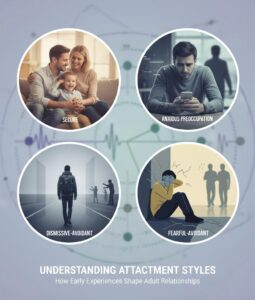Virtual Reality Therapy (VRT) is an innovative and transformative therapeutic tool that leverages immersive virtual environments to treat a variety of psychological and physical conditions. With the advent of cutting-edge technology, VRT has been successfully incorporated into mental health treatments worldwide, including in Australia. This article explores the applications, effectiveness, and potential future of VRT, drawing upon scientific evidence and its growing implementation in Australian healthcare.
Keywords: Virtual Reality Therapy, VR therapy for mental health, Virtual reality exposure therapy, Virtual reality in Australia, VR for phobia treatment, PTSD treatment with VR, Cognitive rehabilitation with VR, VR therapy for anxiety and stress
What is Virtual Reality Therapy?
Virtual Reality Therapy (VRT) uses computer-generated, immersive simulations to provide a controlled therapeutic environment. Unlike traditional therapy, which relies on imagination or discussion, VRT allows individuals to engage in realistic scenarios designed to address specific issues. For example, patients with a fear of flying can virtually experience boarding and flying on an aircraft in a safe and controlled environment (XRHealth, 2023).
VRT capitalises on the brain’s ability to perceive virtual experiences as real. Research suggests that this immersive nature enhances the therapeutic effect by allowing patients to directly confront their fears, stressors, or challenges (Powers & Emmelkamp, 2008). This makes it an effective tool for addressing mental health disorders, phobias, chronic pain, and even physical rehabilitation (Melbourne Wellbeing Group, 2023).
Applications of Virtual Reality Therapy
Virtual Reality Therapy has diverse applications across various domains of mental health and rehabilitation:
1. Phobia Treatment
VRT has proven highly effective in treating specific phobias, such as a fear of heights, flying, or public speaking. By creating controlled simulations, therapists can gradually expose patients to their fears, fostering desensitisation. For example, VRT has been successfully used to treat acrophobia (fear of heights) by gradually increasing the height within the simulation (Riva et al., 2019).
2. Anxiety and Stress Management
Virtual environments tailored for relaxation and mindfulness exercises have shown significant reductions in anxiety and stress levels. Studies demonstrate that patients who engage in virtual mindfulness programs report improvements in emotional regulation and mental well-being (Freeman et al., 2017).
3. Post-Traumatic Stress Disorder (PTSD)
For individuals with PTSD, VRT offers a groundbreaking approach to exposure therapy. Patients can virtually revisit trauma-related scenarios in a safe and controlled setting, helping them process and desensitise traumatic memories. In Australia, clinics such as Melbourne Wellbeing Group have been pioneering VR-based PTSD therapy for veterans and first responders (Daily Telegraph, 2023).
4. Cognitive Rehabilitation
VRT is increasingly being used for cognitive rehabilitation, particularly for individuals recovering from strokes or traumatic brain injuries. Interactive virtual exercises help improve memory, attention, and problem-solving skills, accelerating recovery (AtlantisVR, 2023).
5. Pain Management
Virtual reality has been utilised to distract patients from chronic pain by immersing them in engaging environments, reducing their perception of pain. This is particularly beneficial for patients undergoing physical therapy or recovering from surgery (Hoffman et al., 2011).
6. Physical Rehabilitation
For individuals with mobility challenges, VRT provides an engaging platform for physiotherapy exercises. Virtual tasks, such as reaching or balancing in simulated environments, can motivate patients and improve physical outcomes (AtlantisVR, 2023).
Effectiveness of Virtual Reality Therapy
The growing body of evidence supports the efficacy of VRT as a therapeutic tool:
- For Phobias: Meta-analyses show that VRT is as effective as traditional exposure therapy, with the added advantage of customisable and controlled environments (Carl et al., 2019).
- For PTSD: A study conducted among veterans found a 34% reduction in PTSD symptoms after completing VRT sessions, highlighting its potential for trauma-related disorders (Daily Telegraph, 2023).
- For Anxiety and Stress: VRT has been demonstrated to significantly reduce symptoms of generalised anxiety disorder, social anxiety, and panic disorder. Relaxation-based VR applications have shown particular promise in reducing physiological stress markers (Freeman et al., 2017).
- For Physical and Cognitive Rehabilitation: Patients engaging in VR-based rehabilitation programs report faster recovery times and greater adherence to exercises compared to traditional methods (AtlantisVR, 2023).
Virtual Reality Therapy in Australia
Australia has been at the forefront of adopting VRT into mental health and rehabilitation practices. Clinics such as the Melbourne Wellbeing Group have successfully implemented VRT for conditions such as phobias, anxiety, and PTSD. AtlantisVR, another Australian provider, has integrated VR into physiotherapy and cognitive rehabilitation programs, benefiting patients recovering from neurological and physical conditions (AtlantisVR, 2023).
The National Disability Insurance Scheme (NDIS) has also recognised the value of VRT. Australian providers are incorporating VR into therapies for individuals with disabilities, offering innovative approaches to build life skills and enhance quality of life (Blossom Community Care, 2023).
Advantages of Virtual Reality Therapy
VRT offers several benefits over traditional therapeutic approaches:
- Controlled and Safe Environment: VRT allows therapists to design and control scenarios tailored to the patient’s needs. This is particularly advantageous for exposure therapy, where gradual desensitisation is key (XRHealth, 2023).
- Accessibility: With advancements in technology, VRT can be delivered remotely, making it accessible to individuals in rural or underserved areas. XRHealth in Australia provides virtual therapy sessions that patients can access from the comfort of their homes (XRHealth, 2023).
- Enhanced Engagement: The immersive and interactive nature of VR keeps patients motivated and engaged, increasing the likelihood of therapeutic success (Freeman et al., 2017).
- Cost-Effectiveness: Over time, VRT can reduce costs associated with therapy by providing more efficient and shorter treatment durations (Carl et al., 2019).
Challenges and Considerations
While VRT holds immense promise, it is not without challenges:
- Technological Barriers: High-quality VR equipment and software can be expensive, limiting accessibility for smaller clinics or individuals with financial constraints.
- Individual Variability: Not all patients may respond equally to VR. Factors such as age, technological familiarity, and the severity of the condition can influence outcomes (Riva et al., 2019).
- Ethical Considerations: The use of immersive environments raises ethical concerns, such as ensuring data privacy and preventing potential harm from overly realistic simulations (Freeman et al., 2017).
Future of Virtual Reality Therapy
The future of VRT is promising, with ongoing advancements in technology expected to expand its applications further. Innovations such as augmented reality (AR) and artificial intelligence (AI) are being integrated into therapeutic settings, offering even more personalised and adaptive treatments. In Australia, the growing adoption of VRT by healthcare providers, combined with government support, ensures that this groundbreaking therapy will continue to transform mental health care.
Conclusion
Virtual Reality Therapy is revolutionising mental health and rehabilitation treatments by providing immersive, interactive, and effective therapeutic options. From phobia treatment to PTSD recovery and physical rehabilitation, VRT has demonstrated its versatility and efficacy. With its adoption in Australia and globally, VRT represents a significant step forward in modern healthcare, offering hope and healing to countless individuals.
References
- AtlantisVR. (2023). Virtual Reality Therapy for Rehabilitation. Retrieved from https://atlantisrc.com.au/virtual-reality/
- Blossom Community Care. (2023). Therapeutic Virtual Reality in NDIS. Retrieved from https://blossomcommunitycare.com.au/therapeutic-virtual-reality-in-ndis/
- Carl, E., Stein, A., Levihn-Coon, A., Pogue, J. R., Rothbaum, B., Emmelkamp, P., Asmundson, G. J., & Powers, M. B. (2019). Virtual reality exposure therapy for anxiety and related disorders: A meta-analysis of randomized controlled trials. Journal of Anxiety Disorders, 61, 27-36.
- Daily Telegraph. (2023). Could VR Therapy Help Cure Your Phobias? Retrieved from https://www.dailytelegraph.com.au/lifestyle/could-vr-therapy-help-cure-your-phobias/
- Freeman, D., Haselton, P., Freeman, J., Spanlang, B., Kishore, S., Albery, E., Denne, M., Brown, P., & Slater, M. (2017). Automated psychological therapy using immersive virtual reality for treatment of fear of heights: A single-blind, parallel-group, randomised controlled trial. The Lancet Psychiatry, 5(8), 625-632.
- Riva, G., Baños, R. M., Botella, C., Wiederhold, B. K., & Gaggioli, A. (2019). Virtual reality in the treatment of mental disorders: A review of current findings and future directions. Cyberpsychology, Behavior, and Social Networking, 22(3), 182-191.
- XRHealth. (2023). Virtual Reality Therapy in Australia. Retrieved from https://xrhealth.com.au/
How to get in touch
If you or your NDIS participant need immediate mental healthcare assistance, feel free to get in contact with us on 1800 NEAR ME – admin@therapynearme.com.au.







